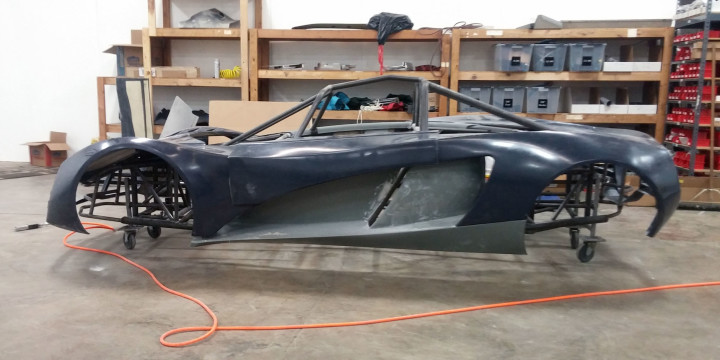Small delays are inevitable, but the big problem is that they tend to accumulate. Now, we have 10 days until we leave for testing on the Mountain. We’ve had delays in receiving (and occasionally even ordering) parts, machining, getting materials, process issues, etc. All solvable individually and we have been solving them as they come up. As you’ve probably surmised from the picture above, the D2 body panels are finally here so I will start with that.
D2RS
Since we don’t currently have time to sort out the mold sealing issues, the decision was made to go with wet layup (rather than infused) and take the 20-50 lb weight penalty that goes with it. The exact weight difference won’t be known until we get first real production parts. But the ones we have aren’t too terrible, with nose and tail being around 40 lbs each.
The nose and tail shells were done at M&W Fiberglass, the side panels at Willamette Pattern in order to get everything as soon as possible. Once the parts arrived we have rough-trimmed the panels by fitting them on one of the in-progress D2 chassis we have in the shop.
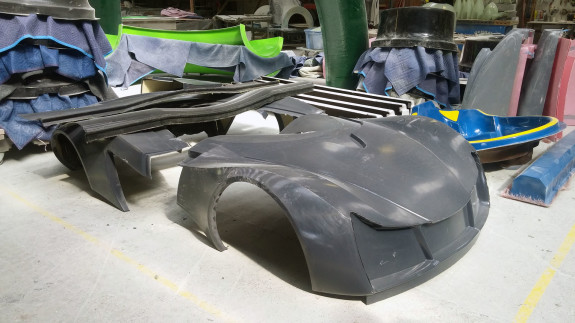
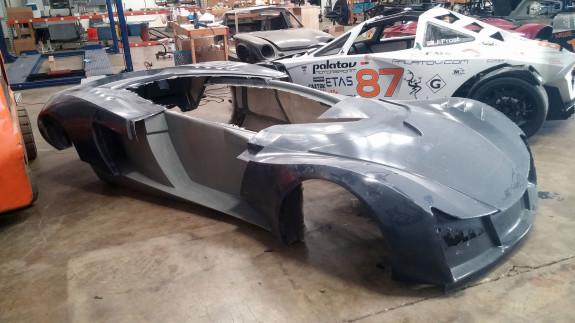
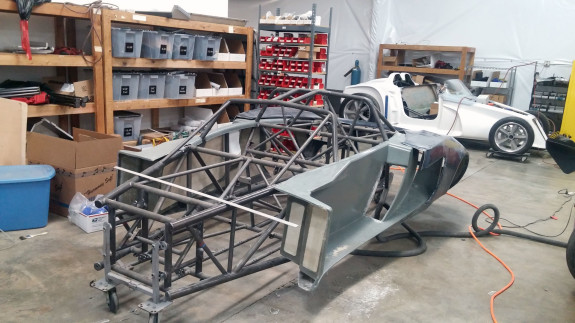
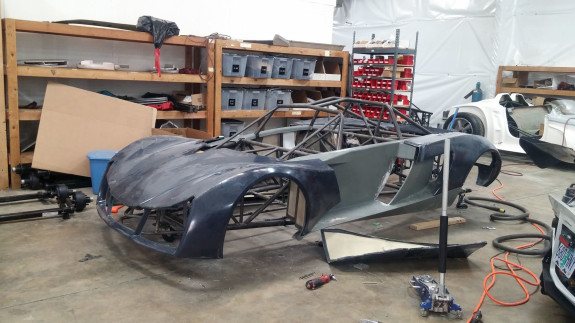
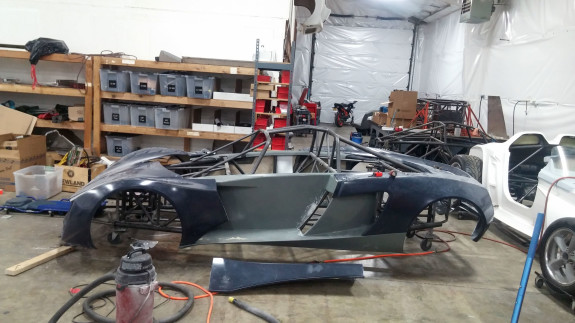
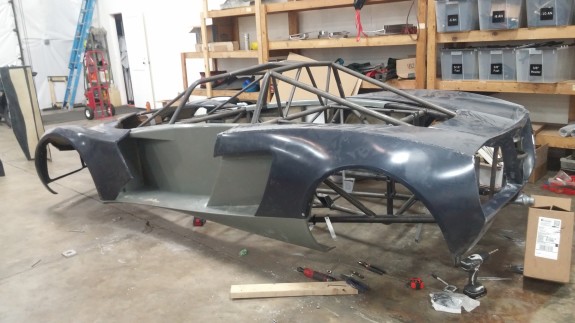
So far everything seems to fit pretty well, although we’ll have to figure out a lot of brackets, tabs, supports, etc. But that was expected and planned. The next step is to mount everything on the actual car. The doors will be the last to be trimmed, but here’s what the car will look like with them on.
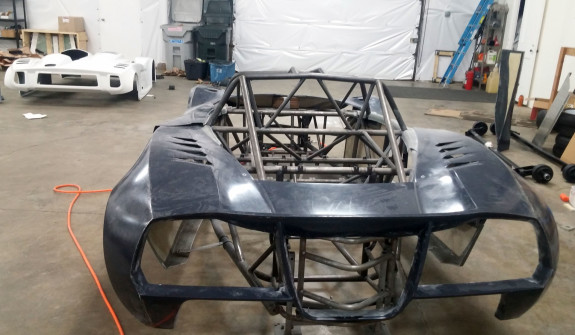
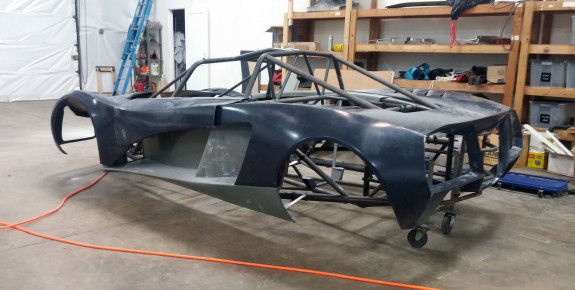
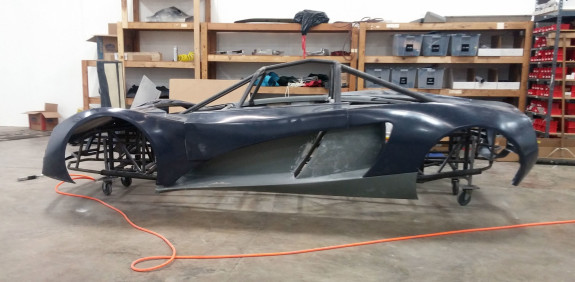
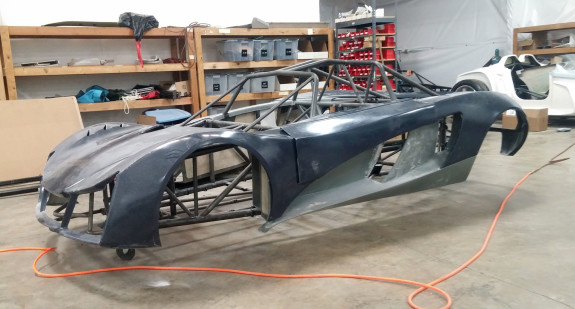
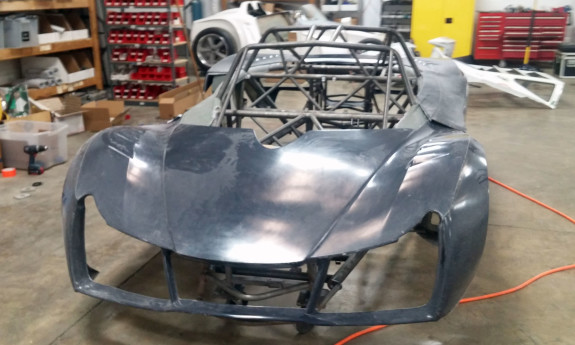
While all this is happening, Friday was the car’s last track outing in old clothes. We were invited to a private trackday and Jonathan gave rides – to say that people were impressed is an understatement 🙂 Also got some testing done as a bonus and came up with a list of items to take care of.
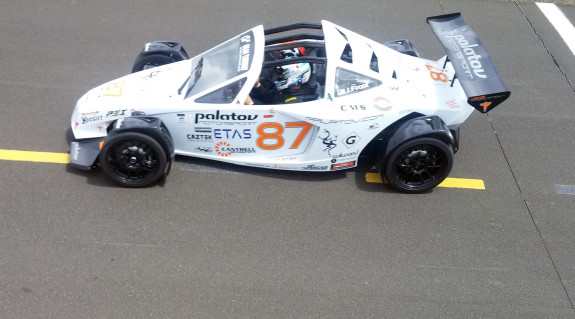
So now the old parts come off to make room for the new.
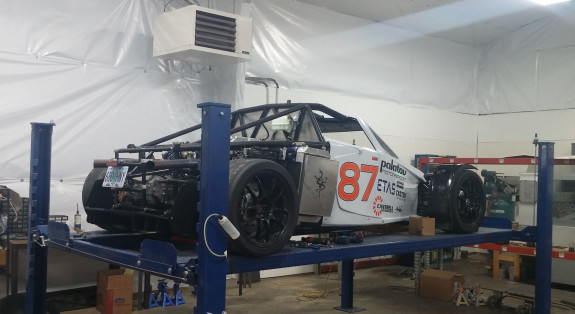
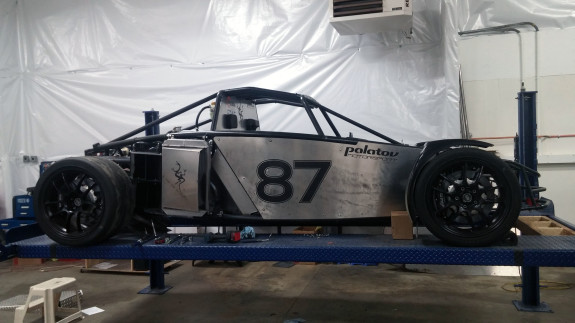
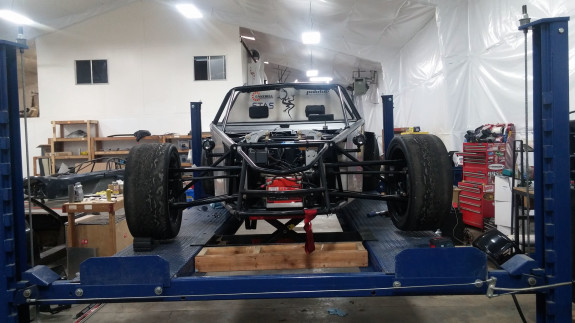
Removing the fenders is a significant weight savings – 7 lbs of unsprung weight per corner upfront, 9 lbs in the back. So in all that alone sheds 32 lbs, and where it counts most. Another immediate weight reduction came from installing JBA headers – at 7 lbs each vs 11 stock they save another 8 lbs.
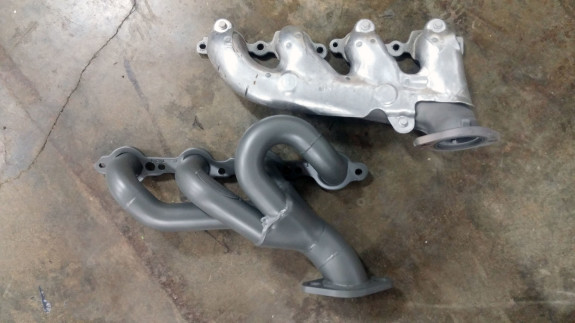
We’ll hopefully do a dyno run between the early June testing and the race to see where we are power-wise. Regardless, the headers are a nice upgrade visually, offer meaningful weight savings and are emissions approved maintaining our emissions-legal status. Quite a bit of work remains on the D2RS but it’s manageable, and if that were all we have to do then all of us wouldn’t be here at 9 pm on a sunday working, as I write this. Actually the only reason I’m able to do the post is because the CNC mill is churning out parts and I can do something else while it’s running.
D1PPS
This is where the majority of the challenges are. We always knew it was going to be tight, since the decision to go ahead with this car wasn’t made until mid-February. No room for small delays adding up, but that’s what they do. Here’s an example – the engine we are using is a Hartley H2. It’s the first of its kind and was the result of me convincing John to design and build a 4-cylinder as a lower cost, lower weight alternative to the V8. He has done a lot of development since then and as previously mentioned, many of the upgrades were done to this engine. John completed the work on schedule and shipped the engine to us. One thing he mentioned is that the flywheel had poor engagement with the starter and that he was going to make and ship me a new one. Cool.
The previous post detailed some of the fabrication we had to do in order to fit the turbo to the engine and have any hope of the whole thing fitting in the car. The story didn’t end there – when we got to George Dean Racing and went to install the engine on the dyno, we realized that his fixture would have to be modified.
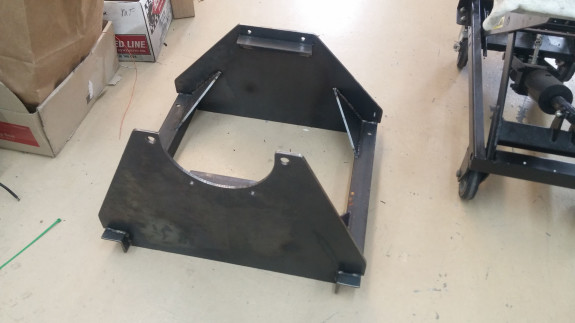
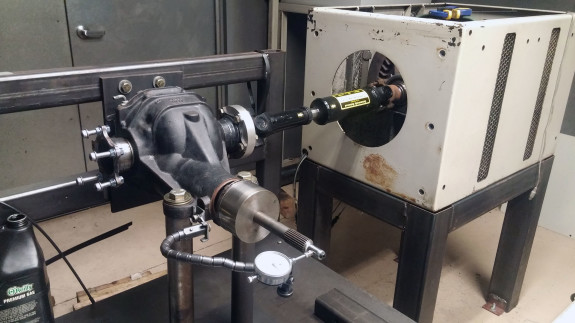
Took some time to get all that worked out. Then we realized the coolant hose fittings on the engine are different from the hoses he had onhand, so that had to be taken care of. Next was the fact that the engine uses a remote oil filter and we left it in Portland, leaving us to scramble to find one locally at odd hours in the night, then modify it for -10 AN fittings. Installing an oil pressure sensor took some time, as did making a hybrid Gen I/Gen II wiring harness. Again, all doable but the time adds up.
Finally on Saturday the engine was running and idling very well even with the 1,000cc Injector Dynamics injectors. The mapping process could now begin. George is very methodical in his work and is careful to make sure the engine warms up and is brought up to power gradually. Afterall it’s never been run until now. I went back to Portland earlier to continue machining the suspension boxes and related bits. Machining generates a lot of chips – for every pound of parts, we generate roughly 4-5 pounds of chips.
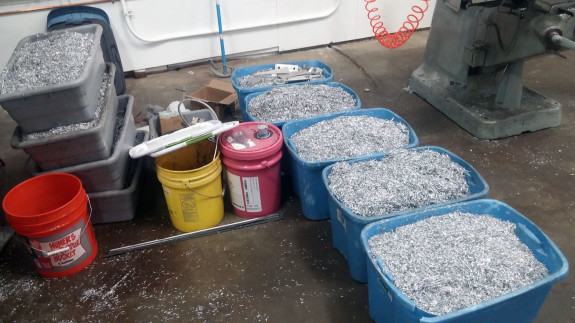
We recycle the metal but mostly for the environment rather than any financial reason since it’s worth pennies on the dollar compared to what we spent to buy the raw stock. This is where 3D printing will be awesome, once it becomes more affordable. But in the meantime, parts are getting made. I’ll do a separate post on the suspension boxes when they’re ready.
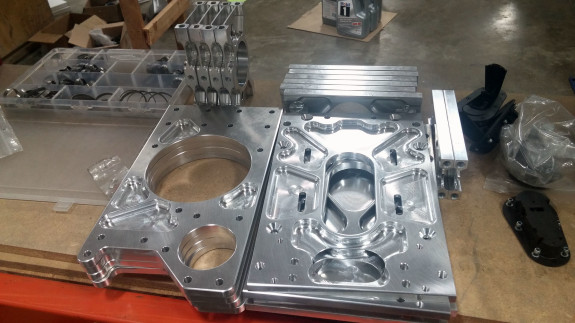
We are always looking for new/better ways to do things and solutions, unsurprisingly, arise out of necessity. Tristan needed to fabricate some ducts for the oil coolers on the car – there is one for the engine and one for transmission. We normally get these types of parts laser cut and CNC bent. It’s cost-effective and accurate. The problem is that it takes a week or two – time which we don’t have. So Tristan was looking for a way to quickly and precisely transfer a pattern to metal. Then he remembered that we have a vinyl cutter which we use for making decals and graphics. He tried it, with perfect results.
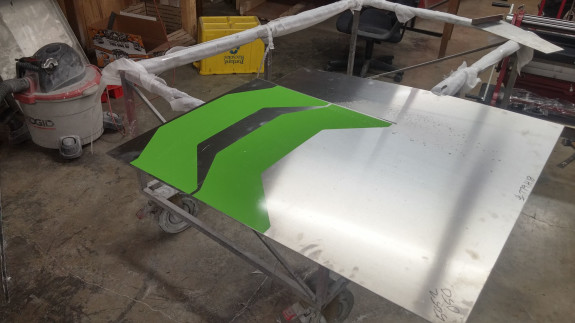
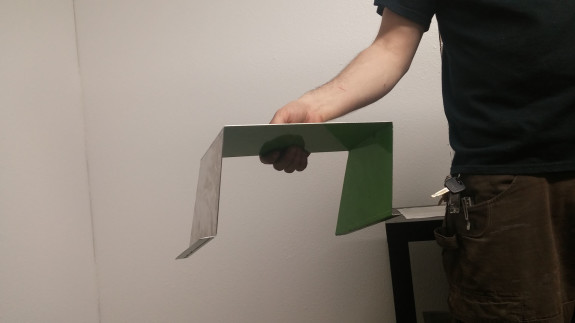
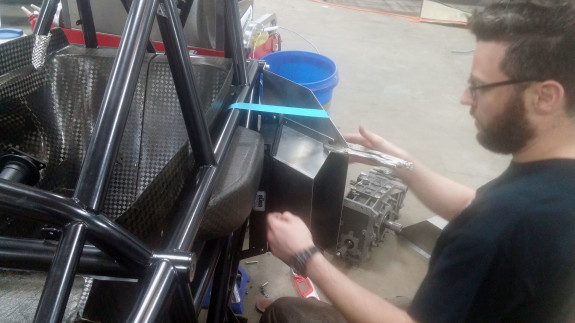
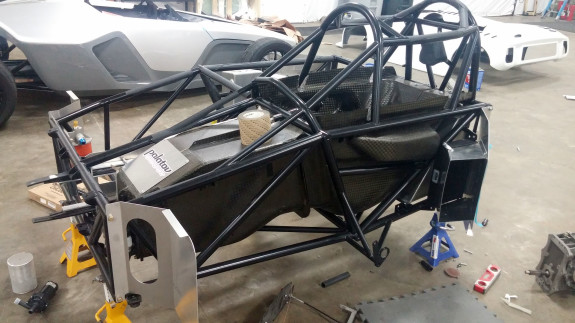
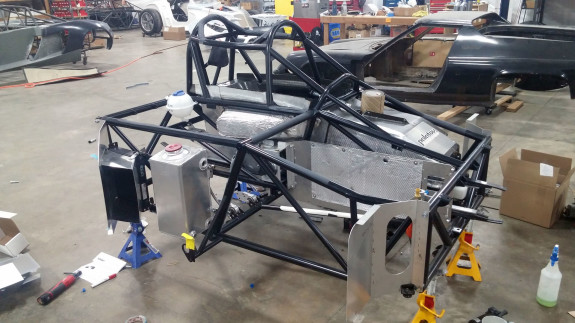
Things are generally moving along although there is a LOT to do still. Then around mid-day today I get a call from George – the starter stripped several teeth off the flywheel and the engine cannot be started anymore. His dyno is not set up to act as a starter, it’s only a load. A frantic call to John – he has the new flywheel onhand but it’s two timezones away. We need it here tomorrow morning if we are to have any hope of getting the car ready. This being a Sunday it’s still possible, but expensive – $550 to ship the flywheel for Monday AM delivery to Seattle. Well, at least it’s possible. Times like this is when we are especially grateful for all the support we’ve been receiving from our sponsors. Thank you!
We’ll carry on the fight and will keep you posted.


